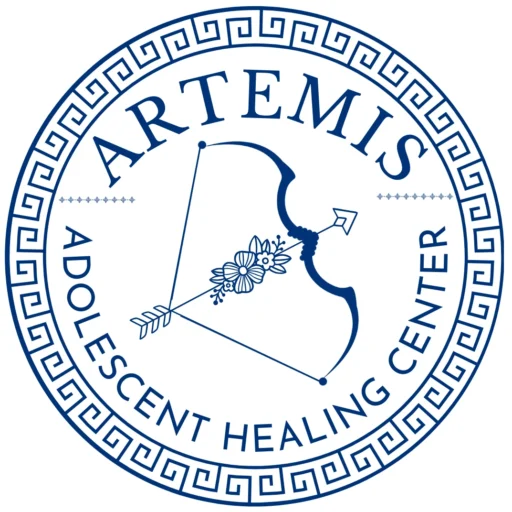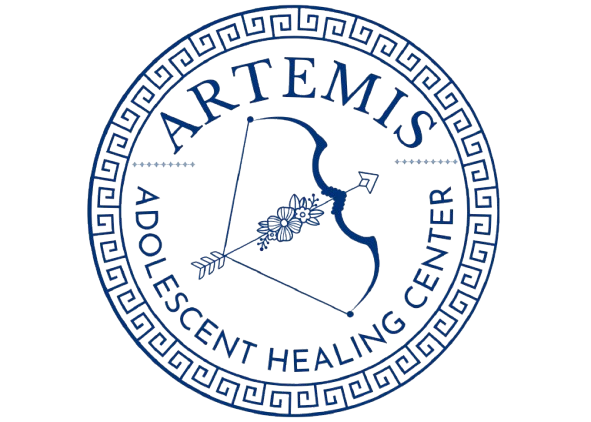The Risks for Teens from Pro-Anorexia And Pro-Bulimia Websites
Many teens are obsessed with social media, but what happens when something that should connect them to peers becomes dangerous? Pro-bulimia (pro-mia) and pro-anorexia (pro-ana) websites might look like support or motivation.
At their heart, though, is content about dangerous dieting tips, starvation challenges, and body comparisons that make your teen feel they are not enough.
For teens who already feel insecure growing into their bodies, pro-ana sites and pro-mia sites can be devastating. But our expert staff at Artemis Adolescent Healing Center is here to help.
Our blog resource guide below will help parents identify pro-eating disorder websites that leave teens at a greater risk of an eating disorder, so you know when to step in and help your child or loved one get the support needed to overcome disordered eating.
Get Confidential Mental Health Assessment
Pro-Ana and Pro-Mia Websites Parents Should Watch For
One of the problems with pro-eating disorder websites is that they aren’t always upfront about the subliminal messages they’re sending to teens with their content. They present anorexia and bulimia as “lifestyle choices”.
Often, your teen can find dangerous pro-ana content tips on extreme dieting, hiding food restrictions from parents, or purging after meals. This might be marketed as “dieting tips”, “body goals”, or “thinspiration.”
Even if your teen knows the risks, these communities leave them comparing themselves to others. They might even share photos and look at others’ bodies, fueling competition and comparison.
Coded language and private hashtags keep parents from easily finding such content. It’s even banned on platforms like Tumblr, Reddit, Instagram, and TikTok, but users work around these restrictions. Twitter, Discord, and Telegram also have communities where teens may be at risk.
Your teen feels like they belong, but the reality is, these communities are a type of self-harm that damages your child’s physical and mental health.
Why Are Anorexia Nervosa and Bulimia So Common in Teens?

Being a teenager is hard, especially when your child’s still learning who they are. When they’re constantly seeing “perfect” images online, changing in gym class, and hearing peers talk about their own bodies, it’s hard not to create comparisons.
The result? Your teen is more vulnerable to poor body image and low self-esteem.
Approximately 1-in-7 men and 1-in-5 women will struggle with an eating disorder before age 40, with most cases starting earlier than age 25 years. Perfection, peer pressure, and stress make teenagers especially susceptible. Many teens use food as a way to regain control when they feel powerless.
Content Analysis and Risks According to European Eating Disorders Review
Pro-anorexia websites and pro-mia websites make body dissatisfaction that young people might be feeling even worse. According to the European Eating Disorders Review, adolescents exposed to certain social media sites promoting pro-bulimia and pro-anorexia content is associated with:
- More frequent disordered eating behaviors
- Higher rates of anxiety, depression, and perfectionism
- Social withdrawal and emotional isolation
- Increased body dissatisfaction and drive for thinness
- Dangerously low body weights
- Increased risk of mental illness
The emotionally charged messages used to bring readers/subscribers convince your teen that recovering from these disorders is a sign of failure. This message is incredibly harmful for teens already struggling with insecurity.
What are Signs Your Teen is Involved in Pro-Ana or Pro-Mia Communities?

Parents might feel guilty about overlooking the signs, but they are so subtle. If your teen is involved in these communities, or if they are just struggling with an eating disorder, you may notice:
- Eating disorder behaviors like:
- Avoiding meals with families
- Making excuses to avoid eating
- Frequent bathroom trips after eating
- Wearing oversized clothing to hide weight loss
- Sudden secrecy around phone or internet use
- Becoming withdrawn, anxious, or irritable
- Following or posting in online groups that glorify thinness
- Being obsessive in their goal to lose weight
These behaviors often start small and grow over time. Your teen may even try to convince you that they’re trying to “get fit” or “eat healthier”, but if there is a right way to go about it. If it becomes extreme or obsessive, your teen may need help.
The National Eating Disorders Association has a free screening tool that can help you make the decision.
And our caring staff are also available at any time for a confidential consultation, and can let you know if our various levels of eating disorder treatment programs would be the right fit for your child or loved one.
Body Image, Eating Disorders, and Mental Health
Eating disorders can go beyond what your teen looks like. Unrealistic beauty standards leave your child feeling that they are not enough. It’s not about vanity. Your teen is using food control as a coping mechanism for depression, anxiety, or emotional pain.
Unfortunately, website exposure and online communities that promote pro-anorexia and pro-bulimia content only make eating disorder behaviors much worse.
What Can I Do if I Think My Teen Has an Eating Disorder?

If you think your teen is struggling, the best place to start is with a conversation. Ask how they’ve been feeling or if they’re under stress. Don’t comment on their weight or stress. Focus on their emotions instead. Some signs of disordered eating in young adults (wearing different clothes, eating difficulties, being withdrawn) are signs of an underlying mental illness instead.
You don’t want your teen to fight you. You want to support them, so they’re open to getting help.
You can also reinforce positive food relationships at home, encouraging balanced (but still healthy) meals. Talk about harmful content online and how things online aren’t always what they seem.
Last, don’t be afraid to ask for help from Artemis. Eating disorders are hard to overcome alone, particularly if your teen is struggling emotionally as well.
Up To 100% of Rehab Costs Covered By Insurance
Find Effective Help for Teen Eating Disorders at Artemis
It’s impossible to monitor everything your teen sees online, but you can take action when something feels off. Learn the influence of pro-mia and pro-ana websites, so you can recognize when this harmful content might be leading to eating disorder behaviors in your teen.
At Artemis Adolescent Healing Center, we work closely with teens and their families who’ve been exposed to such social media sites. We look deeper at the reasons your teen may be struggling, address underlying mental health issues, and promote the right kind of self-care.
Getting your teen effective help may be easier than you think. Call us confidentially today.
References
- https://www.health.harvard.edu/blog/eating-disorders-spike-among-children-and-teens-what-parents-should-know-202204212731
- https://onlinelibrary.wiley.com/journal/10990968
- https://www.nationaleatingdisorders.org/screening-tool/






